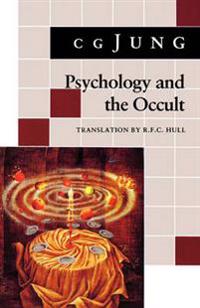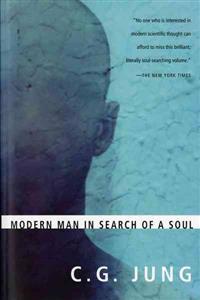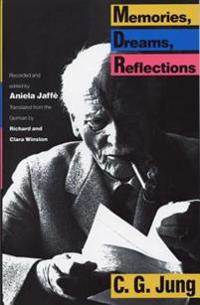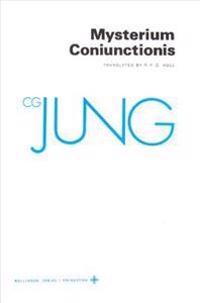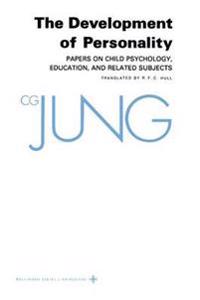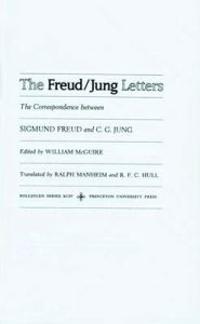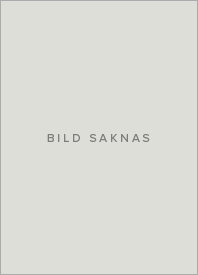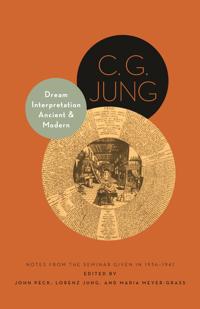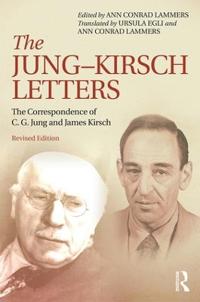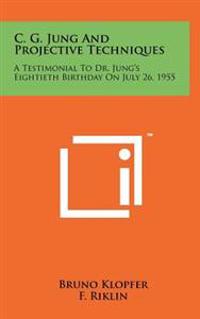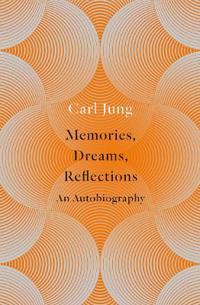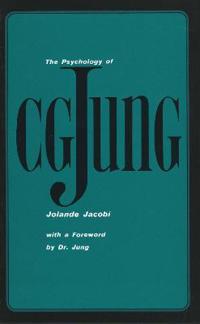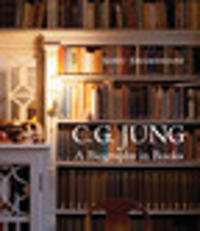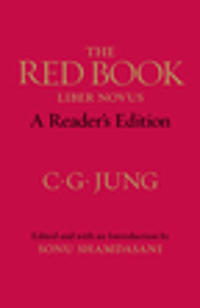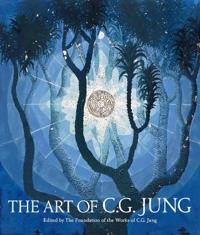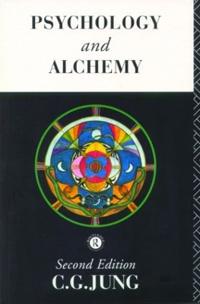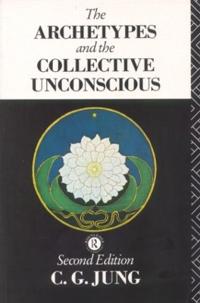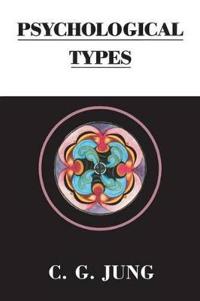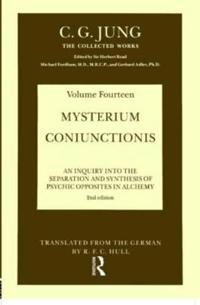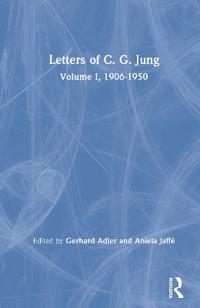Psychology and the Occult: (From Vols. 1, 8, 18 Collected Works) (Häftad)
avCarl Gustav Jung, C. G. Jung, G. Adler
ISBN: 9780691017914 - UTGIVEN: 1978-01Extracted from Volumes 1, 8, and 18. Includes Jung's Foreword to Phenomenes Occultes (1939), "On the Psychology and Pathology of So-called Occult Phenomena," "The Psychological Foundations of Belief in Spirits," "The Soul and Death," "Psychology and Spiritualism," "On Spooks: Heresy or Truth?" and F[...]
Modern Man in Search of a Soul, (Häftad)
avCarl Gustav Jung, C. G. Jung
ISBN: 9780156612067 - UTGIVEN: 195508The Swiss psychologist discusses such aspects of analytical psychology as dream analysis and the primitive unconscious[...]
Memories, Dreams, Reflections (Häftad)
avCarl Gustav Jung, C. G. Jung, Aniela Jaffe
ISBN: 9780679723950 - UTGIVEN: 198904An autobiography put together from conversations, writings and lectures with Jung's cooperation, at the end of his life.[...]
Mysterium Coniunctionis (Häftad)
avCarl Gustav Jung, C. G. Jung, Michael Fordham
ISBN: 9780691018164 - UTGIVEN: 197708The great psychologist provides a detailed account of the problems of philosophical alchemy and its central endeavor and symbols, relating them to his own psychological discoveries[...]
Development of Personality: Child Psychology, Education, and Related Subjects (Häftad)
avCarl Gustav Jung, C. G. Jung, Herbert Edward Read
ISBN: 9780691018386 - UTGIVEN: 198110Papers on child psychology, education, and individuation, underlining the overwhelming importance of parents and teachers in the genesis of the intellectual, feeling, and emotional disorders of childhood. The final paper deals with marriage as an aid or obstacle to self-realization.[...]
The Freud/Jung Letters: The Correspondence Between Sigmund Freud and C. G. Jung (häftad)
ISBN: 9780691036434 - UTGIVEN: 1994-07This abridged edition makes the Freud/Jung correspondence accessible to a general readership at a time of renewed critical and historical reevaluation of the documentary roots of modern psychoanalysis. This edition reproduces William McGuire's definitive introduction, but does not contain the critic[...]
Nietzsche's Zarathustra: Notes of the Seminar Given in 1934-1939. Two Volumes (Inbunden)
avCarl Gustav Jung, C. G. Jung, James L. Jarrett
ISBN: 9780691099538 - UTGIVEN: 1988-09As a young man growing up near Basel, Jung was fascinated and disturbed by tales of Nietzsche's brilliance, eccentricity, and eventual decline into permanent psychosis. These volumes, the transcript of a previously unpublished private seminar, reveal the fruits of his initial curiosity: Nietzsche's [...]
Dream Interpretation Ancient & Modern (Inbunden)
avC. G. Jung, John (EDT) Peck, Lorenz (EDT) Jung
ISBN: 9780691159454 - UTGIVEN: 2014-06From 1936 to 1941, C. G. Jung gave a four-part seminar series in Zurich on children's dreams and the historical literature on dream interpretation. This book completes the two-part publication of this landmark seminar, presenting the sessions devoted to dream interpretation and its history. Here we [...]
Analytical Psychology: Its Theory and Practice (Pocket)
avCarl Gustav Jung, C. G. Jung
ISBN: 9780744800562 - UTGIVEN: 1986-09-11Based on the Tavistock Lectures of 1930, one of Jung's most accessible introductions to his work.
The Jung-Kirsch Letters: The Correspondence of C.G. Jung and James Kirsch (häftad)
ISBN: 9781138843493 - UTGIVEN: 2016-02This book charts Carl Gustav Jung's 33-year (1928-61) correspondence with James Kirsch, adding depth and complexity to the previously published record of the early Jungian movement. Kirsch was a German-Jewish psychiatrist, a first-generation follower of Jung, who founded Jungian communities in Berli[...]
C. G. Jung and Projective Techniques: A Testimonial to Dr. Jung's Eightieth Birthday on July 26, 1955 (Inbunden)
avBruno Klopfer, F. Riklin, K. W. Bash
ISBN: 9781258029081 - UTGIVEN: 2011-05Memories, Dreams, Reflections (Häftad)
avC. G. Jung
ISBN: 9780006540274 - UTGIVEN: 199503'I can understand myself only in the light of inner happenings. It is these that make up the singularity of my life, and with these my autobiography deals, - Carl Gustav Jung.[...]
Wear Your Life Well: Use What You Have to Get What You Want (Häftad)
avC. G. Jung, William McGuire
ISBN: 9780060988593 - UTGIVEN: 200905It's not enough just to live--you have to wear your life well Learn how in this inspiring guide from New York Times bestselling author and beloved actress Marilu Henner.Marilu Henner is in better shape now in her fifties than she was in her twenties--at peak health, working with her active online c[...]
The Psychology of C. G. Jung (Häftad)
avJolande Jacobi
ISBN: 9780300016741 - UTGIVEN: 197707Dr. Jung never took time out from his pioneering work in psychology to make a concise presentation of the elements of his psychological theories. Dr. Jacobi's synthesis, which Jung applauds in his Foreword, offers the reader a comprehensive review of the central content of his system by a student an[...]
C. G. Jung (Inbunden)
avSonu Shamdasani
ISBN: 9780393073676 - UTGIVEN: 201204In 1912, C. G. Jung wrote, Should it happen that all traditions in the world were cut off with a single blow, the whole mythology and history of religion would start over again with the succeeding generation. With this, Jung gave new understanding to the concept of world literature: that the history[...]
The Red Book: A Reader's Edition (Inbunden)
avC. G. Jung, Sonu Shamdasani
ISBN: 9780393089080 - UTGIVEN: 201212The Red Book, published to wide acclaim in 2009, contains the nucleus of C. G. Jung s later works. It was here that he developed his principal theories of the archetypes, the collective unconscious, and the process of individuation that would transform psychotherapy from treatment of the sick into a[...]
The Art of C. G. Jung
ISBN: 9780393254877 - UTGIVEN: 2018-11The landmark publication of C.G. Jung's The Red Book spurred enormous interest in Jung-not just as a founding figure in modern psychology but also as a creative man with tremendous figurative and ornamental flair and a vibrant eye for colour. Expanding beyond that singular achievement, The Art of C.[...]
Psychology and Alchemy (Häftad)
avC. G. Jung
ISBN: 9780415034524 - UTGIVEN: 198012Alchemy is central to Jung's hypothesis of the collective unconscious. In this volume he begins with an outline of the process and aims of psychotherapy, and then moves on to work out the analogies between alchemy, Christian dogma and symbolism and his own understanding of the analytic process. Intr[...]
The Archetypes and the Collective Unconscious (Häftad)
avC. G. Jung
ISBN: 9780415058445 - UTGIVEN: 199106The concept of 'Archteypes' and the hypothesis of 'A Collective Unconscious' are two of Jung's better known and most exciting ideas. In this volume - taken from the Collected Works and appearing in paperback for the first time - Jung describes and elaborates the two concepts. Three essays establish [...]
Civilization In Transition (Inbunden)
avC. G. Jung
ISBN: 9780415065795 - UTGIVEN: 1964-03-31This volume contains essays bearing on the contemporary scene and, in particular, on the relation of the individual to society.[...]
Psychological Types (Häftad)
avC. G. Jung
ISBN: 9780415071772 - UTGIVEN: 199201Psychological Types is one of Jung's most important and most famous works. First published by Routledge (Kegan Paul) in the early 1920s it appeared after Jung's so-called fallow period, during which he published little, and it is perhaps the first significant book to appear after his own confrontati[...]
Mysterium Coniunctionis (Inbunden)
avC. G. Jung
ISBN: 9780415091152 - UTGIVEN: 196303Mysterium Coniunctionis was first published in the Collected Works of C.G. Jung in 1963. For this second edition of the work, numerous corrections and revisions have been made in cross-references to other volumes of the Collected Works now available and likewise in the Bibliography. Mysterium Coniun[...]
Letters (Inbunden)
avC. G. Jung
ISBN: 9780415094351 - UTGIVEN: 1973-05In May 1956, in his eighty-second year, Jung first discussed with Gerhard Adler the question of the publication of his letters. Over many years, Jung had often used the medium of letters to communicate his ideas to others and to clarify the interpretation of his work, quite apart from answering peop[...]
The Symbolic Life (Inbunden)
avC. G. Jung
ISBN: 9780415098953 - UTGIVEN: 1977-04-07Originally planned as a brief final volume in the Collected Works, The Symbolic Life has become the most ample volume in the edition, and one of unusual interest.[...]
The Practice Of Psychotherapy (Inbunden)
avC. G. Jung
ISBN: 9780415102346 - UTGIVEN: 1993-09-02"The Practice of Psychotherapy" brings together Jung's essays on general questions of analytic therapy and dream analysis. It also contains his profoundly interesting parallel between the transference phenomena and alchemical processes.[...]

